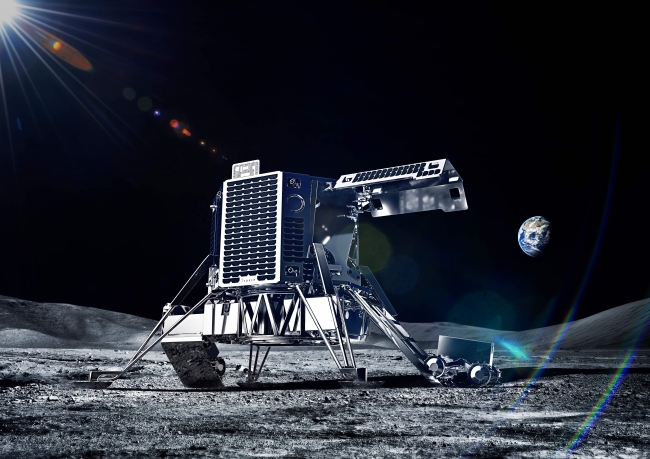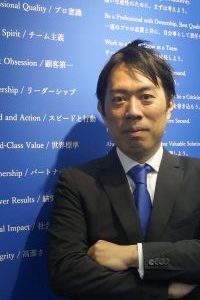 https://prtimes.jp/main/html/rd/p/000000009.000024249.html
https://prtimes.jp/main/html/rd/p/000000009.000024249.htmlispace Inc. raises huge amount of funding
ispace raises huge amount of funding
13:00
ispace Inc. has raised 10.15 billion yen in funding. They are carrying the dreams of so many people on their backs.
I thought it was really amazing.
The following is the text of the press release.
I understood for the first time that space development was resource development.
<Press Release>.
ispace Inc. completed on December 13, 2017 (Wednesday) a capital increase through third-party allotment to new shareholders including Innovation Network Corporation of Japan, Development Bank of Japan Inc. and Tokyo Broadcasting System Holdings, Inc. Together with the additional investment by the new shareholders, the total amount of funds raised will total 10.15 billion yen as of the end of December.
h ttps:// prtimes.jp/main/html/rd/p/000000009.000024249.htmlThis is the largest Series A financing ever raised by a Japanese startup company in Japan and the largest Series A financing ever raised in the space sector in the world (as of December 13, 2017). With this financing, ispace will become the first private company in Japan to launch two lunar exploration missions, "lunar orbit" and "lunar landing," using its proprietary lunar lander. ispace will launch its proprietary lunar lander twice by the end of 2020, and will launch it as Mission 1 around the end of 2019. Mission 2 will be a soft landing on the Moon around the end of 2020 to explore the Moon's surface using the Lunar Surface Exploration Rover.(headquartered in Minato-ku, Tokyo; Takeshi Hakamada, President; hereinafter "ispace"), on Wednesday, December 13, 2017, in collaboration with Innovation Network Corporation of Japan, Development Bank of Japan, Tokyo Broadcasting System Holdings, Inc, Dentsu Inc., Real Tech Fund, KDDI Corporation, Japan Airlines Corporation, and Toppan Printing Co. The total amount of funds raised, together with the additional investment by Sparx Group Corporation, will total 10.15 billion yen as of the end of December. This financing is the largest amount ever raised by a Japanese startup company in Japan as a Series A* and the largest amount ever raised by a Series A company in the space sector worldwide (as of December 13, 2017).With this financing, ispace will become the first private company in Japan to launch two lunar exploration missions, "lunar orbit" and "lunar landing," using its proprietary lunar lander. ispace will launch its proprietary lunar lander twice by the end of 2020, and Mission 1 will be launched around the end of 2019. Mission 2 will be a soft landing on the Moon around the end of 2020 to explore the Moon's surface using the Lunar Surface Exploration Rover.In this fundraising, along with various institutional investors, we have received support from a number of operating companies. Institutional investors will support us with their extensive investment know-how and global networks. We are also planning to invite companies with diverse backgrounds to participate in various joint R&D and joint projects through the two lunar exploration missions, and to support us as business partners in building space infrastructure together using the ispace lunar module and lunar exploration rover as platforms. We are planning to have them support our company as our business partner.*Series A: Investment rounds for startup companies in the product planning, development, and accompanying technology development stages.In 2040, 1,000 people will live on the Moon, 10,000 people will visit the Moon annually, and space infrastructure will be built around the Moon's "water resources," including construction, energy, steel, communications, transportation, agriculture, medicine, and lunar travel. ispace will support the development of this space infrastructure to support the lives of people on Earth, as well as the lives of people on the Moon. ispace aims to realize a sustainable world in which the entire space ecosystem, including the Earth and the Moon, becomes an ecosystem, supporting the lives of people living on Earth.Water resources are essential for sustaining life and vegetation, and can also be used as fuel for rockets by breaking down into hydrogen and oxygen. If water resources can be secured on the Moon, they will become an important resource for human life on the Moon in the future. In addition, it will be possible to refuel rockets on the Moon before heading to more distant bodies such as Mars or asteroids. The Moon's ability to serve as a refueling base would reduce the amount of fuel needed for rockets launched from the Earth, resulting in tremendous launch cost savings and the ability to carry payloads equivalent to the weight of the fuel.ispace believes that the water resources of the Moon are the key to changing the way people and goods are transported to space and accelerating the future of human life in space. The two missions announced this time are the starting point for establishing technologies for lunar exploration, including transportation of goods to the Moon and resources necessary for building space infrastructure based on lunar water resources. Landing on the Moon is an advanced technology that has only been achieved in three state-sponsored missions by the United States, Russia, and China in the history of mankind.Mission 1 and 2 will be carried out in two phases, "Injection into lunar orbit" at the end of 2019 and "Soft landing on the Moon" at the end of 2020, using a lunar module of the same design. The data and experience gained from Mission 1 will be fed back into the design of the lunar module for Mission 2, which will steadily establish the technology necessary for a soft landing on the Moon.The lunar module will be capable of carrying a total payload of 30 kg, including two new ispace small and lightweight lunar exploration rovers, each of which will be able to carry up to 5 kg of payload. The payload space of these lunar landers and lunar exploration rovers will be used to provide cargo transportation services to the Moon for space agencies, research institutes, universities, and private companies in various countries. The ability to carry payloads on the Lunar Module or Lunar Exploration Rover will allow research equipment for science and test equipment for technology development to be actually tested in lunar orbit or on the lunar surface.In addition, the lunar surface data provision service will include the provision of images and video on the lunar orbit and surface taken during lunar orbit and landing missions, as well as observation data on radiation levels, lunar resources, and the lunar environment, and R&D data on topography, experiments, and technologies, which can also be used in corporate marketing activities. By providing these services, we will create an opportunity for not only existing space agencies, universities, and space-related companies, but also companies and organizations that have not been directly involved in space to start new initiatives on the Moon.By triggering a chemical reaction among space agencies and major companies representing the space industry, space start-ups, and non-space-related companies, we will create value that has never existed before in the space industry and further democratize the space industry. We are looking for companies to collaborate on Mission 1 and Mission 2, not only in Japan but also on a global scale. Please look forward to ispace's lunar exploration mission with Japan's first privately developed lunar module.Comment from Takeshi Hakamada, President of ispace Inc.We are pleased to announce that ispace will begin lunar lander development with this funding to build a flexible and regular lunar transportation system and to further promote exploration and development on the Moon by leveraging our strength in small space robotics technology. We will actively lead global space resource development not only in Japan, but also through our bases in Luxembourg and the United States. Furthermore, we will leverage the knowledge and networks of the institutional investors and operating companies that have invested in this project to build a private space business system centered on lunar resources, and beyond that, to create a sustainable human society in which humans can live in space."(Head office: Chiyoda-ku, Tokyo; President: Mikihide Katsumata) Development Bank of Japan Inc. (Head office: Chiyoda-ku, Tokyo; President: Masanori Yanagi) Tokyo Broadcasting System Holdings, Inc. (Headquarters: Chiyoda-ku, Tokyo; President and CEO: Masae Yamana) Shimizu Corporation (Headquarters: Chuo-ku, Tokyo; President: Kazuyuki Inoue) Suzuki Motor Corporation (Headquarters: Hamamatsu City, Shizuoka; President: Toshihiro Suzuki) Dentsu Inc. (Headquarters: Minato-ku, Tokyo; President: Toshihiro Yamamoto) Realtech Fund (Headquarters: Minato-ku, Tokyo; President: Akihiko Nagata) KDDI Corporation (Headquarters: Chiyoda-ku, Tokyo; President: Koji Tanaka) Japan Airlines Corporation (Headquarters: Shinagawa-ku, Tokyo; President: Yoshiharu Ueki) Toppan Printing Co. (Head office: Chiyoda-ku, Tokyo; President: Shingo Kaneko) Sparks Group Corporation (Head office: Minato-ku, Tokyo; President: Shuhei Abe) * Additional investment ispace lunar exploration mission image Mission 1 "Lunar Orbit" ispace lunar exploration mission image Mission 2 "Moon Landing 2 "Lunar Landingispace will develop the world's smallest and lightest Lander and Rover in an agile manner, and plan flexible, low-cost, high-frequency, and maneuverable missions. ispace's technologies for miniaturization and weight reduction will reduce overall mission costs and increase opportunities to mount the Lander and Rover on rockets. By increasing the number of launch opportunities, we expect to create high frequency launch opportunities, accelerate research and development, and stabilize quality through mass production.The space industry is undergoing a structural transformation, and the private sector is now able to build its own business. The technology is becoming commoditized, and low-cost, high-performance, stable-quality consumer products are being utilized, and software-based system design is becoming the mainstream. Against the backdrop of changes in government budgets, the space business is shifting to a "public-private partnership" in which the private sector takes the initiative in development and operation, and the government purchases the services.In 2009, NASA research in the U.S. suggested the existence of "water" resources on the Moon's surface, and this led to a rapid increase in interest in the development of space resources. The concept of a gas station that electrolyzes water (H2O) in space to produce liquid hydrogen (H2) and liquid oxygen (O2), which can then be used as fuel to supply the lunar surface with gas. Lunar missions, which are expected to create industries through the development of water resources, have become a common global theme that is attracting the attention of many countries, including NASA in the United States and ESA in Europe. In addition, discussions are accelerating in the United States, Luxembourg, and other countries to establish legislation for private space resource development.■ ispace Corporation http://ispace-inc.com/jpn A space startup company working on lunar resource development with the vision "Expand our planet. Expand our future. ~Expand the sphere of human life into space for a sustainable world~". In December 2017, the company raised 10.15 billion yen, the highest amount ever raised in Japan in Series A (as of December 13, 2017), and announced two missions: "lunar orbit" and "lunar landing" by Japan's first privately developed lunar module; collaborated with JAXA and the Luxembourg government on lunar resource development; and is currently working on the development of a new lunar resource. Activities are conducted from three bases: Japan, Luxembourg, and the United States. Operates HAKUTO, the only Japanese team to participate in a lunar exploration race.
Later Stories
Although I wrote the above blog around 2017, ispace was already listed on the stock exchange during that time.
I thought that landing on the moon, a field that requires tremendous technological capabilities, although the possibility of landing on the moon is not zero, is an area of industry that Japan will promote together with the public and private sectors.


